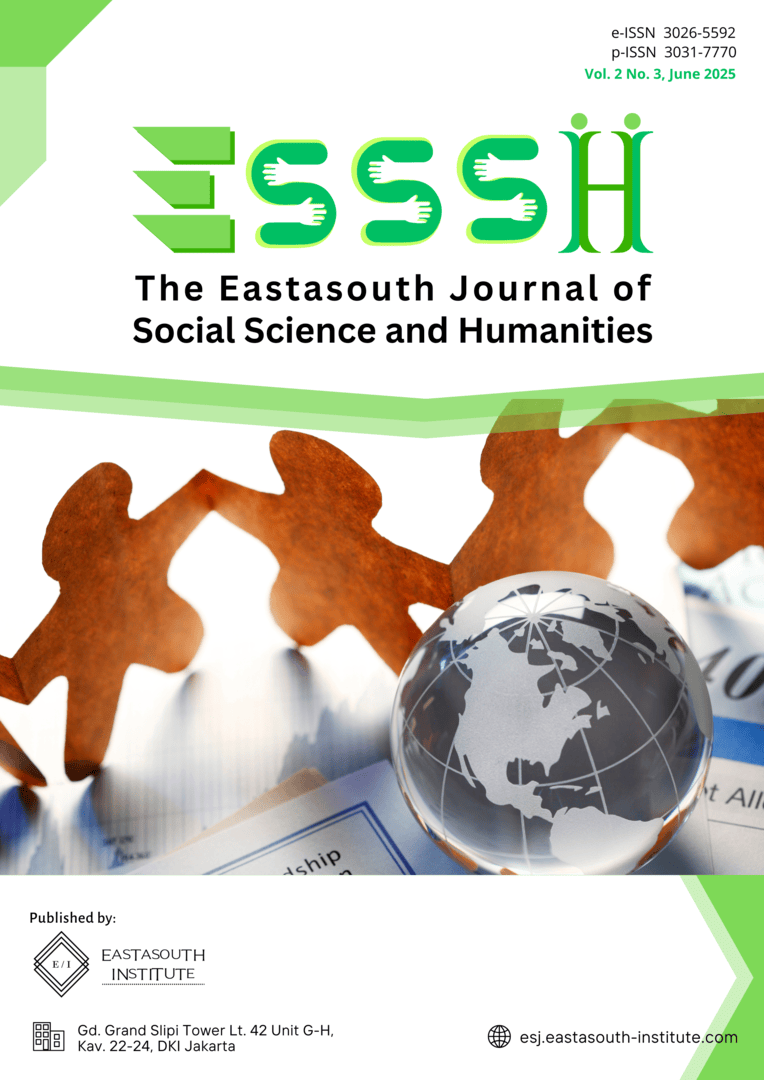Strategy For Developing an Artificial Intelligence (Ai)-Based Air Defense Integrated System (ADIS) To Realize a Strong National Air Defense
Main Article Content
Abstract
This study discusses the Strategy for Developing an Air Defense Integrated System (ADIS) based on Artificial Intelligence (AI) in realizing a strong national air defense. The purpose of this study is to analyze the capabilities of ADIS, the use of AI technology and its development strategy in supporting the realization of a strong national air defense system. The method used is SSM analysis as the main method, the supporting method applied is Analytical Hierarchy Process (AHP). The results of the study indicate that the AI-based ADIS development strategy is an ecosystem model that can realize a solid, strong, independent, and sovereign air defense system, which is in accordance with the structure and characteristics of the Indonesian nation as an archipelagic country. The strategy for developing a strong air defense includes the formation of the National Air Defense System Posture (Sishanudnas) and System Integration, human resources (HR) in line with effective airspace management, accompanied by a doctrine that is able to adapt to the demands of technological progress and changes in the strategic environment that is always dynamic, and related to organizational aspects.
Article Details

This work is licensed under a Creative Commons Attribution-ShareAlike 4.0 International License.
References
X. Gao and J. Yu, “Public governance mechanism in the prevention and control of the COVID-19: information, decision-making and execution,” J. Chinese Gov., vol. 5, no. 2, pp. 178–197, 2020.
J. Gruber, Controlling bureaucracies: Dilemmas in democratic governance. Univ of California Press, 2023.
A. Dzedzickis, A. Kaklauskas, and V. Bucinskas, “Human emotion recognition: Review of sensors and methods,” Sensors, vol. 20, no. 3, p. 592, 2020.
I. B. R. Supancana, “Law Enforcement Against Aircraft Entering The Territory Of The United States Of The Republic Of Indonesia,” Lex Laguens J. Kaji. Huk. dan Keadilan, vol. 2, no. 2, pp. 11–20, 2024.
B. Heuser, “New military technologies and changes in warfare through the ages,” in Research Handbook on Warfare and Artificial Intelligence, Edward Elgar Publishing, 2024, pp. 10–27.
S. Zhao, F. Blaabjerg, and H. Wang, “An overview of artificial intelligence applications for power electronics,” IEEE Trans. Power Electron., vol. 36, no. 4, pp. 4633–4658, 2020.
C. M. Rosca, “Comparative Analysis of Object Classification Algorithms: Traditional Image Processing Versus Artificial Intelligence—Based Approach,” Rom. J. Pet. Gas Technol, vol. 4, pp. 169–180, 2023.
A. Ramalingaiah and M. Muninarayanappa, Women Empowerment Through Self-Help Groups. Ashok Yakkaldevi, 2023.
M. Shurkin, R. S. Cohen, and A. Chan, “French Army Approaches to Networked Warfare,” 2022.
A. Sumari, “Pentingnya Penguasaan Teknologi Artificial Intelligence Untuk Mendukung Operasi Militer,” pp. 19–37, Jul. 2020.
L. Harrison, P. Saunders, and J. Janowitz, “Artificial Intelligence with Applications for Aircraft, US Department of Transportation,” FAA Technical Report, DOT/FAA/CT-94/41, 1994.
J. I. Jones, R. Kress, W. J. Newmeyer Jr, and A. I. Rahman, “Leveraging Artificial Intelligence (AI) for Air and Missile Defense (AMD): An Outcome-Oriented Decision Aid,” Nav. Postgrad. Sch., 2020.
R. Sahay, D. A. S. Estay, W. Meng, C. D. Jensen, and M. B. Barfod, “A comparative risk analysis on CyberShip system with STPA-Sec, STRIDE and CORAS,” Comput. Secur., vol. 128, p. 103179, 2023.

